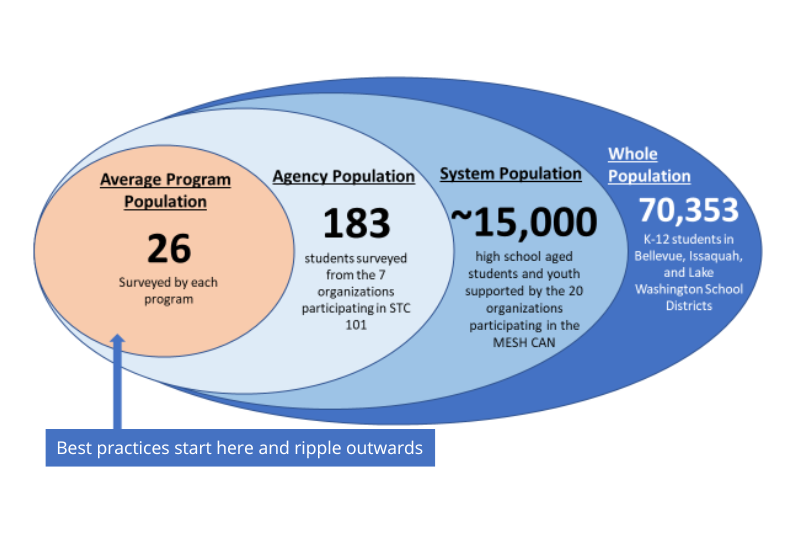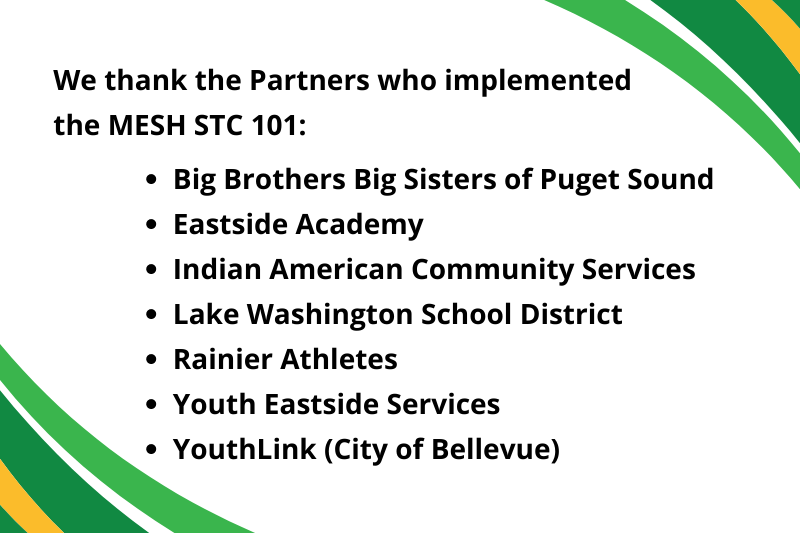How small, adaptable improvements can lead to change on a greater scale
Every program starts out as an idea: it could be a modification of an existing way of doing things, the introduction of a new approach, or a focus on a different population. Since every program represents change, many organizations use some form of continuous improvement, such as the Plan Do Study Act (or Adjust) framework to provide feedback on how the change is going.
A PDSA cycle is a method comprised of four components – developing a plan to test the change (Plan), carrying out the test (Do), learning about what happened based on observation and data analysis (Study), and finally, determining what adjustments need to be made for the next test or execution of the strategy at a wider scale (Act or Adjust). Quality observation and measurement of process indicators throughout the cycle are critical.
Small tests are helpful when making big changes
The usefulness of the PDSA cycle is perhaps even more apparent for collective impact initiatives where stakeholders serve a common focus population and agree on a set of goals. The shared focus can turn what might be a vague aspiration of continuous improvement into a streamlined process in which ideas are co-designed. Fortunately, since collective work has the potential for wide impact across sectors and the larger community, the most insightful approach is also the most responsible one: conduct small tests of change (STC).

These iterative, short cycles allow teams to better develop, revise and fine-tune a tool, process, strategy, or initiative that might lead to the desired change and potentially transform their work in small and large ways. When done well, such small tests of change can validate a proof of concept, and help set reasonable expectations for impact, costs, and side effects. By staying small, risks are minimized; in fact, “failed” tests are seen as opportunities to learn and adjust. Honest interpretation of the results of STCs can counter resistance to proposed changes, and eventually clear a path towards action and systems change.
Testing a way for systems change: an Eastside Pathways example
In East King County, the emerging youth mental health crisis of the past decade had propelled school districts to introduce social-emotional learning (SEL) curricula, healthcare providers to screen for mental health risk factors, and youth out-of-school-time (OST) facilities to expand activities and outreach.
“We know that our Partners are united by similar concerns,” says Eastside Pathways Community Impact Manager Sandy Nathan. “And they also agreed that programs to develop young people’s mindsets, essential skills, and habits (MESH) would help them to eventually thrive through life stresses in post-secondary life and beyond.”
That hypothesis led the CAN to create the MESH Benchmark of Quality (BoQ) – a self-evaluation tool helping organizations understand how well their own programs and internal practices are embedding the importance of SEL and equity in five domains demonstrated in research as critical for the holistic development of youth: Supportive Environment, Program Quality, Professional Development, Community Partnership, and Continuous Improvement. If organizations could use the BoQ to identify their strengths and weaknesses, they will be able to better support the social emotional needs of youth.
To test the utility of the BoQ, the CAN designed a two-phase Small Test of Change cycle. During the 2021-2022 school year, seven of the 20 organizational partners in the CAN volunteered for the first phase, known as MESH STC 101. These participants used the BoQ to conduct a current-state analysis of their program by collecting feedback from both program staff and from the very target of their services – high school-aged students. STC 101 supported the participating organizations to conduct a current state analysis of their program against the BoQ self-evaluation scale.

“It was terrific to engage our student voices in our reflections, conversations, and future-planning,” says Carl Dodd, Head of Eastside Academy, one of the seven organizations that implemented the MESH STC 101.
“Participation in an Eastside Pathways CAN is a great way for organizations to work simultaneously on a PDSA activity,” notes Eastside Pathways Data Officer Payton Richardson. Collaborating stakeholders develop confidence in the strategy and clarity in the process, especially in the indicators for measurement. And another bonus: they share accountability for the progress of the initiative and keep up the momentum for change. On the value of doing a PDSA collaboratively, Dodd agrees: “we really enjoyed networking and hearing the experiences and practices that are taking place in our community… it was definitely helpful to know that other partners were going through a similar experience.”
“The MESH STC 101 initiative showed us that each organization was at different levels of progress towards their self-defined ideal states,” says Nathan. “We want to help them continuously shift their organizational culture to promote positive mental health and supports for youth by identifying their own areas (domains) of improvement.” By forming a community of practice and breaking the work into pieces of manageable scale, the CAN took the first steps toward creating a strong, equitable social safety net for youth in East King County. The seven organizations involved nearly 200 high school aged youth in the MESH STC 101 phase. Nathan sees promise in those numbers: “Imagine the community impact… how many more young people would be affected by such a culture shift if all youth-focused organizations upstream and downstream were to participate!”

In 2022-2023, the CAN will launch the second phase: the MESH STC 201 will continue to build an action plan for organizations to intentionally include youth representation in examining and collaboratively building strategies for how to best support social emotional well-being of youth. As it did for the MESH STC 101, Eastside Pathways backbone will provide an implementation guide, facilitation support, and a central repository for data/information collected during the tests.
Change is hard, and the process and responsibility of making it happen can be murky, especially when issues are complex and many parties are involved. But by doing small batches of testing, with intentional data collection and analysis, collective groups become a united community of practice in which ideas are validated as workable steps towards shared vision.
Email info@eastsidepathways.org to share comments or for more information.

